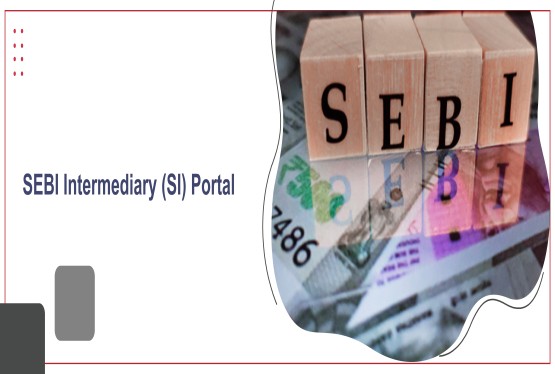Limited Liability Partnerships (LLPs) allow for a partnership structure in which each partner's responsibility is restricted to the amount they invest in the business. Having business partners entails distributing risk, using individual abilities and knowledge, and creating a division of work.
A Limited Liability Partnership (LLP) can be closed by simply writing off the name of a LLP that has not conducted any business or commercial operations in the last year. To employ this strike off method of closing, the LLP must first have no assets or obligations. Business partners must first settle the LLP's accounts by selling any assets and paying off any liabilities that may exist. The LLP will be closed by the Registrar if it has no assets or liabilities and there are no objections from the general public. In this article, we are going to discuss about LLP Closure Procedure.
Legal Compliance of Closing an LLP
Rule 37 of the 2009 Limited Liability Partnership Rules states that-
-
If a limited liability partnership has not conducted any business for two years or more, the Registrar may take Suo moto action to strike off its name.
-
If a limited liability partnership has not conducted any business for one year or more and if the partnership has made an application in Form 24 to the Registrar with the consent of all partners, the name may be struck off of the limited liability partnership from the register and requesting that they return their representations along with copies of the necessary papers, if any, within one month of the date of the notification.
How to Close an LLP?
The limited liability partnership referred to in clause (b) of sub-rule (1) of rule 37 must:
1. Stop business operations: LLP Form 24 can only be filed by LLPs that have never done business or have discontinued commercial activity. As a result, if the LLP is functioning and the promoters want to close it, it must first halt all economic activity.
2. Dissolve the Bank Account(s): LLP Form 24 can only be filed by LLPs with no creditors and no open bank accounts. As a result, prior to filing LLP Form 24, any bank account opened in the name of the LLP must be closed, and the bank must provide a letter confirming the closing of the bank account in the LLP's account.
3. Obtain Affidavits and Declarations: All Designated Partners of the LLP must first sign an affidavit, either jointly or severally, stating that the Limited Liability Partnership stopped to conduct business activities on mentioning the specific date, or has not resumed operations. The LLP Partners must certify that the LLP has no liabilities and it will cover any liability that may arise even after its name is removed from the Register. The Partners' obligation would not be extinguished even after the LLP was closed using Form LLP 24.
4. Prepare documents: Along with Form LLP 24, the LLP's income tax return and deed must be enclosed If the LLP has not filed an income tax return or conducted any business activities, it is not necessary. Otherwise, a copy of the acknowledgement of the most recent income-tax return filed must be included with the application to close the LLP.
5. File any pending documents: Following LLP incorporation, the LLP agreement must be filed with the MCA (Ministry of Corporate Affairs) within 30 days of registration. If this compliance is missed and the LLP agreement is not filed, the initial LLP agreement, as well as any changes, must be filed.
6. Obtain the Chartered Accountant Certificate: Once all the paperwork for submitting LLP Form 24 have been prepared, a certified statement of accounts indicating NIL assets and NIL liabilities from a practising Chartered Accountant up to a date not earlier than thirty days before to the filing date is required.
7. File the LLP Form 24: The documents, coupled with LLP Form 24 can then be filed with the MCA to have the LLP name struck out. If the application is considered to be appropriate, the Registrar of Companies will publish a notice on the MCA website announcing the LLP's strikeoff.
Attachments of form 24
-
Copy of the complete application.
-
A copy of the authority to make the application.
-
A copy of the consent of all partners.
-
A copy of the approval of all creditors.
-
A copy of the undertaking/indemnity bond for striking off the name.
-
Certified copy of asset and liability statement from a practicing auditor/chartered accountant.
-
A copy of the acknowledgement of the latest income tax return.
-
Any other information can be included as an optional attachment.
FAQs
Q1. What is the key requirement for closing an LLP with Form 24?
Ans. To close an LLP using Form 24, the LLP must have discontinued all business operations or never conducted any business since its inception. It should not have any ongoing assets, liabilities, or creditors, and all compliance requirements must be current.
Q2. Can an LLP with existing liabilities or open bank accounts submit Form 24?
Ans. No, an LLP must clear all liabilities and terminate all bank accounts before submitting Form 24. A bank closure certificate indicating that the account has been closed must be submitted together with the application.
Q3. Does one need to file all pending returns before filing Form 24?
Ans. Yes, all pending returns, including Forms 8 and 11, must be filed through the fiscal year in which the LLP discontinued operations. Compliance guarantees that the LLP is in good standing prior to filing for strike-off.
Q4. How does the Registrar confirm the liquidation of an LLP once Form 24 is filed?
Ans. If the Registrar deems that the application and documentation are in order, they will post a notice of the strike-off on the MCA website. This verifies that the LLP's name has been deleted from the registry.
-
What documents must be submitted with LLP Form 24? The required documents include:
-
Affidavits and indemnity bonds from designated partners confirming cessation of business.
-
A certified statement of accounts showing NIL assets and liabilities from a Chartered Accountant.
-
Consent of all partners and creditors.
-
Copy of the authority to make the application.
-
Acknowledgement of the latest income tax return (if filed).
-
Other optional attachments as necessary.












_crop10_thumb.jpg)





_crop10_thumb.jpg)




























-Form_crop10_thumb.jpg)

_crop10_thumb.jpg)























_learn_crop10_thumb.jpeg)































_crop10_thumb.jpg)

_crop10_thumb.jpg)





















_crop10_thumb.jpg)















_for_Foreign_Directors_learn_crop10_thumb.jpeg)




_Act,_2015_learn_crop10_thumb.jpg)



































_learn_crop10_thumb.jpg)


































